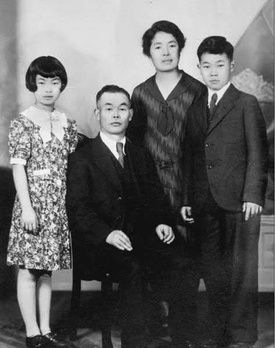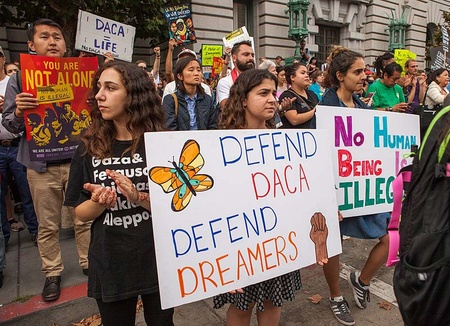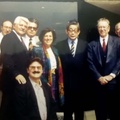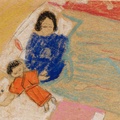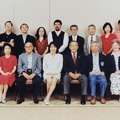The series of anti-immigration measures being instituted by President Donald Trump, including the proposed elimination of the Deferred Action for Childhood Arrivals (DACA) program, is a stark reminder of how Japanese-Americans were persecuted after the Pacific War broke out in December 1941.
Enacted by President Obama in June 2012, DACA has enabled 800,000 young people to study and work in the United States without the threat of deportation. These same young people were brought to the United States as children, without immigration documents, by parents who sought jobs and a better future. These immigrants, mostly from Mexico, have worked hard and honestly in the United States, supplying the demand for labor to drive expansion of the U.S. economy. These 800,000 young people represent the future of the United States and are busy studying and working, which is why they are known as Dreamers.
In the early 20th century, tens of thousands of Japanese workers began arriving in the United States and quickly became active in California’s economy. But there was a reaction: a virulent anti-Japanese movement that made significant gains with the passage of laws preventing Japanese immigrants from becoming naturalized citizens or owning property. When the Immigration Act of 1924 was signed into law by President Calvin Coolidge, the country definitively prohibited Japanese immigrants from entering the U.S., based on the argument that such a measure was necessary to preserve the "ideal of American homogeneity."
But when war broke out in December 1941, of the 120,000 Japanese immigrants and their descendants who lived in the United States, two-thirds were young people and children who held U.S. citizenship. Most of these young people had never been to Japan and were fully integrated into U.S. society. Nevertheless, they were classified as "enemies" of the United States based on their racial background.

General John DeWitt, head of the Western Defense Command on the Pacific Coast, was one of the top military leaders who pushed for internment of Japanese descendants. He believed the war against Japan was racial in nature and that family ties were stronger than any other allegiance for the children and even the grandchildren of immigrants. As a result, they were confined to concentration camps.
Some newspapers deliriously echoed the predominant war and racial hysteria of the day, with one paper going so far as to say this about the children of Japanese immigrants: “A viper is nonetheless a viper wherever the egg is hatched.”1
In this environment of race war hysteria, Japanese-Americans who had grown up and been educated in the United States suddenly found themselves facing an uncertain future, unsure what course their lives would take. Mary Matsuda, who was 16 years old in 1942, and her brother Yoneichi, two years older, were taken to one of the 10 internment camps. At the time, Mary wondered if she would ever be able to return to her home in Washington or if she might even be executed as a prisoner of war. Her brother, who had finished high school, was prevented from entering college.2
Although Mary Matsuda and her brother Yoneichi were U.S. citizens by birth, the start of the war on December 7, 1941 represented "the day that changed their lives forever." Mary’s dreams were cut short and she struggled to understand why her own government would treat them this way.
The September 5, 2017 announcement by U.S. Attorney General Jeff Sessions canceling DACA, almost 80 years later, may also represent the date on which hundreds of thousands of Mexican Dreamers' lives changed forever. The Dreamers were taken to the United States by their parents while they were still children. They have grown up and studied in a country they did not choose to live in. They have not broken any laws, and in order to participate in the DACA program they have had to demonstrate impeccable conduct, in addition to either being matriculated in school, belonging to the armed forces, or holding a job.
The Mexican Dreamers and Dreamers of Japanese descent such as Mary and Yoneichi Matsuda have a great deal in common. Those of Mexican origin, like Mary and her brother Yoneichi, love the country they have grown up in and in which they were formed, and where they continue to work today. As children of Japanese and Mexican immigrants, they have struggled and worked hard–in many cases more than young people who were born in the United States–to get an education and succeed in a country where their physical appearance and origin subject them to rejection due to the racism that exists among wide swaths of U.S. society. The Dreamers of both nationalities were, and are, viewed by many as the "enemy" who should be punished and deported.
Fortunately, despite the hostile and racist wave recently unleashed in the United States, many state governments, universities and individuals have expressed their rejection of the measures against today's Dreamers. Democratic legislators and even some Republican lawmakers have criticized these policies as unfair and inhumane.
Unlike 1942, when Japanese-Americans were persecuted, the government of the State of California is preparing a lawsuit to block the measures that would destroy the dreams of these young people who simply want to study and work to contribute to their country. Likewise, attorneys and judges have joined these lawsuits to prevent such racist and unjust policies from breaking apart thousands of families.
The blanket of fear and uncertainty that oppressed Japanese-Americans is now being expanded to include young Dreamers. In the 1940s, FBI agents showed up at the homes of Japanese-Americans to arrest them; now, immigration agents can do the same by deporting thousands of Dreamers. During World War II, these actions occurred even though the U.S. government, which had carried out a secret investigation, knew that young Japanese-Americans were loyal to the country of their birth. At the time, prejudice and hysteria won the day, resulting in tens of thousands of people spending their childhood years in internment camps.
Although the Mexican Dreamers weren't born here, they are clearly citizens of the United States. They work and study to help the country grow, they pay taxes and they actively participate in the society that will sustain the country's future.
Roberto Valadez, a 24-year-old student who is preparing to graduate from the University of Texas, reflects the opinions of the thousands of Dreamers when he says: “We are students, and most of us have never visited the countries where we were born. We're not hurting anyone; actually, we're making a positive contribution to the country. It's very painful. I feel tremendously sad.”3
Yoneichi Matsuda at the Tule Lake internment camp in northern California where he was held. He was unable to enter college as a result of his internment. However, his desire to fight against the Axis powers, like many of his friends and fellow students, motivated him to join the U.S. armed forces in combat in Europe, even though many considered him the “enemy” due to his physical appearance.
June is another 21-year-old Dreamer of Mexican origin who was able to study because of DACA, just like her siblings and many of her friends. She came to the United States from Coahuila state at the age of 6. Now, like Mary in those fateful days when she was taken prisoner along with her family, she's full of “fear and uncertainty.”4
Hopefully the people of the United States will succeed in stopping these racist policies and preventing the dreams of hundreds of thousands of young people from being destroyed like those of Mary and Yoneichi Matsuda.
Notes:
1. The source of this quote is John W. Dower's book, War without Mercy, which addresses the conflict between the United States and Japan from a racial perspective.
2. The young woman's memoir is titled Looking like the enemy. My story of imprisonment in Japanese-American internment camps.
3. El Diario de El Paso, Tuesday, September 5, 2017
4. La Jornada, September 11, 2017.
Editor’s note: Discover Nikkei is an archive of stories representing different communities, voices, and perspectives. This article presents the opinions of the author and does not necessarily reflect the views of Discover Nikkei and the Japanese American National Museum. Discover Nikkei publishes these stories as a way to share different perspectives expressed within the community.
© 2017 Sergio Hernandez Galindo



